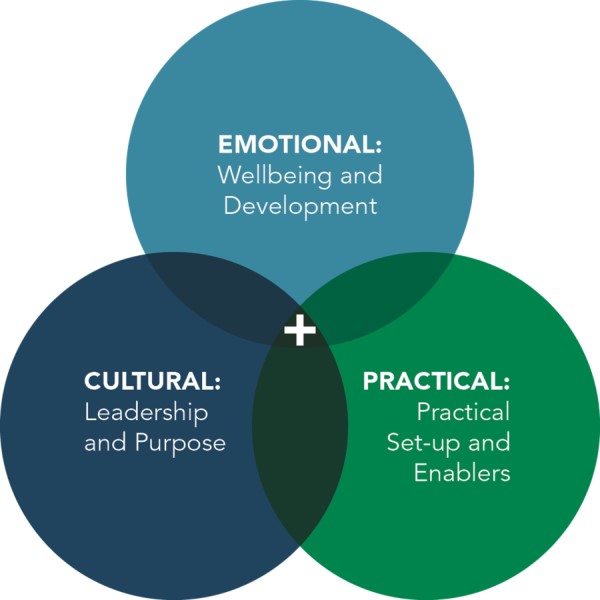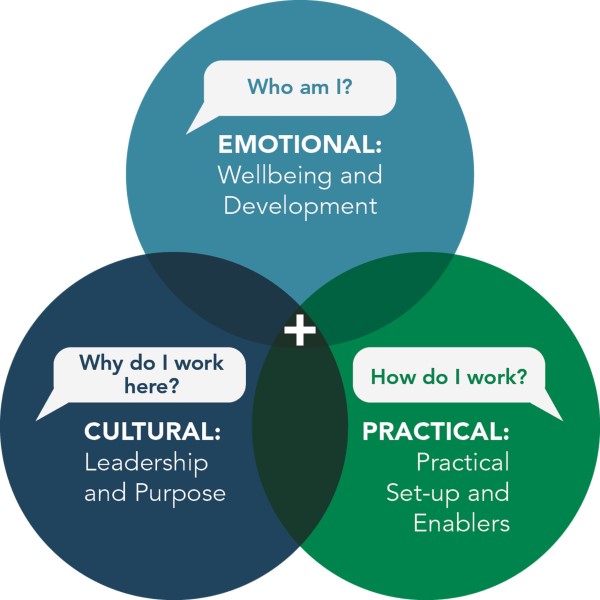How to retain the talents of working carers

Care for the Carers
Heading toward the second half of 2021, employers’ plans for hybrid working are gathering pace. The drive to achieve business goals is strengthening too, in hopes of better times ahead.
It’s also a moment when leading employers are asking searching questions about how best to rebuild engagement and enhance employee experience. Amid warnings of skills shortages, employers increasingly look to retain existing talent, as the CIPD Resourcing and Talent Planning Survey 2020 identified.
Carers are a key part of that talent. According to Employers for Carers, one in seven in your workforce will be caring for someone who is older, disabled or seriously ill, and the average person has a 50:50 chance of caring by age 50. Bright Horizons’ own research has underlined the potential tension between adult care and career progression. In the Modern Families Index published January 2021, three-quarters (75%) of those who indicated a caring responsibility among a UK sample population of 1,000 would need to consider their eldercare options before accepting or applying for a promotion or new job, affecting both genders (73% of female eldercarers and 77% of male eldercarers).
These valued employees have been stretched to the limit in recent times. When Carers UK surveyed nearly 6,000 carers in October 2020, they found the following:
- 78% reported that the needs of the person they care for had increased during the pandemic
- Three quarters of carers (74%) said they were exhausted and worn out as a result of caring during the pandemic
- Two thirds (64%) reported that they hadn’t been able to take any breaks whatsoever in the last six months
- 58% of carers had seen their physical health impacted by caring through the pandemic, while 64% said their mental health had worsened.
This tallies with the findings of Age UK, surveying older people and carers in August and September 2020. They found that many older people had seen their mobility and confidence reduce during the different lockdowns, as many of us with caring responsibilities have witnessed first-hand:
- one in three older people have less energy since the start of the pandemic
- one in four older people are unable to walk as far as before
- one in five feel less steady on their feet.
The direct quotes in the Age UK study bring home the increased frailty and dependence: “Mum used to catch buses to the next town and walk across town and back home on the bus. Now she is struggling to walk down the path.” The sorrow and emotional toll are also clear: “My mum has dementia and she is in a care home which I visited daily. She could not understand why we couldn’t see her. She gets quite sad and her health deteriorated causing her to fall” and this: “She has lost motivation and mainly spends her time sitting alone at home. She has also only been in contact with three people, mainly on the phone, since March and this has caused a massive deterioration in her mental health. She has recently talked about wanting to kill herself.”
The people who have the capacity and determination to have carried this care, and these worries, alongside delivering their work goals over the last year are people to hang on to. Who do we need to be as employers to do that?
Addressing the cultural, emotional and practical aspects as an employer
Through our work with many of the most forward-thinking employers and having coached thousands of busy professionals and line managers, we have identified three overlapping areas for action in any family-inclusive strategy. Generally, you will make a positive difference if you commit to doing two to three things well in each of the areas below: cultural, emotional and practical.
Tools to promote and apply best practice for working carers

Cultural: Leadership & Management
Your potential tools include:
- Leadership and management: Strong messages from the top (emails, videos, speeches) about the importance of balancing work and life, the business case for inclusion & diversity, the importance of the multi-generational workforce, and championing the commitment to retaining talent while enabling workers to fulfil care responsibilities. Training for managers on managing carers, including checklists for the right conversations at the right time. Engagement survey data segmented to reveal satisfaction levels among those with adult dependants.
- Working arrangements: Cultural expectation that agile, flexible and hybrid working are the norm, from senior to junior roles, recruiting to flexible working as a day one expectation. Measure performance on outcomes, not presenteeism. Remember, some carers also need boundaried hours (e.g. to be predictably free on a Thursday afternoon for a specific appointment). Create alternative career routes that allow a plateau then accelerate, temporary flexible working or new ways of progressing. Once hybrid working is embedded, review work allocation practices to ensure no groups are excluded: open, honest conversations with input from the workforce on the issues and solutions.
- Carer’s policies: Clear and engaging policies for carers, promoted to all. Consider Carer’s Leave [1]. Some leading employers match Unpaid Parental Leave (up to four weeks unpaid in any year, up to 18 weeks overall per cared-for person; some provide paid Carer’s Leave, many introducing it during recent restrictions). Consider Carers Passports meaning a carer can take their agreed working arrangements with them as they progress through the organisation. Consider bereavement leave and also sabbaticals. Enable staggered return from caring leave or other absence, with phased build up to full-time. Develop internal expert advisers (e.g. on policies and benefits for carers; flexible working etc.).
Emotional: Development & wellbeing
Your potential tools include:
- Coaching & mentoring: Access to career and work-life coaching for carers on combining career and caring; mentoring/buddying programmes matching carers to share skills.
- Networks that normalise: Internal networks where being a carer is a shared identity; employee resource groups for knowledge sharing and to provide insights to inform the business.
- Content that encourages: Webinars, blogs, podcasts, group chats for sharing experience and tips; places to share gritty real life stories that normalise the challenges and recognise capability across diverse stories.
Practical: Enablers & Tools
Your potential tools include:
- Making work work: Technology solutions and working arrangements to enable remote working and flexible collaboration. Recognising the scope to work from alternative locations (e.g. occasional working from a relative’s home for those caring from a distance). Practical help for alternative ways of working e.g. job share register.
- Backup adult dependant care: Access to extra help when usual arrangements break down or for respite care.
- Care advice: Access to expert advice for carers on finding care, financing care, navigating the care maze, legal matters (e.g. lasting power of attorney); benefits schemes that match life stages and provide practical resources to match life and family needs.
Caring can be uplifting too
Caring responsibilities can emerge over time or happen overnight. For the people who work for us, that can mean a lot to carry. On the other hand, and – it’s important to remember this – they can be a significant part of what gives life meaning. This NPR article by physician Dr. Shahdabul Faraz My Parents Struggled In Pandemic Lockdown. Here's How They Learned To Live Again, offers a helpful personal account that includes the worries but also the fulfilment and joy found in supporting those we love.
Questions carers may be asking themselves at this time of transition
With the wider lens of what gives work and life meaning, another way to look at the three areas of best practice above is through three key questions, as shown below.

These questions – How do I work? Why do I work here? Who am I? – faced by the working carer, fuel the call to action. The best practices described here address these:
- The day-to-day practical pressures are provided for and supported.
- The employer is the best one to work for, who understands and acknowledges the load and works with it.
- The individual has like-minded networks and ways of making sense of their experience.
Which one new action will you commit to?
The author is Jennifer Liston Smith, head of thought leadership at Bright Horizons Work+Family Solutions.
This article is provided by Bright Horizons Work+Family Solutions.
[1] Note on Statutory Carer’s Leave: the government issued a consultation last year, which closed in August 2020, on proposals to introduce a new right to take a week’s unpaid leave per year for employees with caring responsibilities. There is no confirmed timescale for the government’s response to the consultation or for the new right to be introduced, but it is likely to be included in the anticipated Employment Bill, which may be published in 2021 or 2022.
In partnership with Bright Horizons Work+Family Solutions
Bright Horizons is dedicated to providing the best in class work+family solutions.







